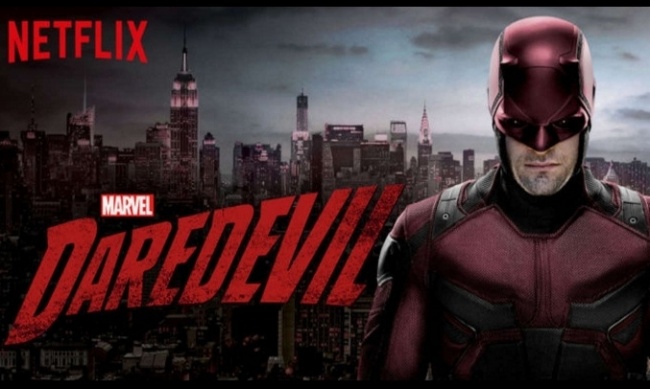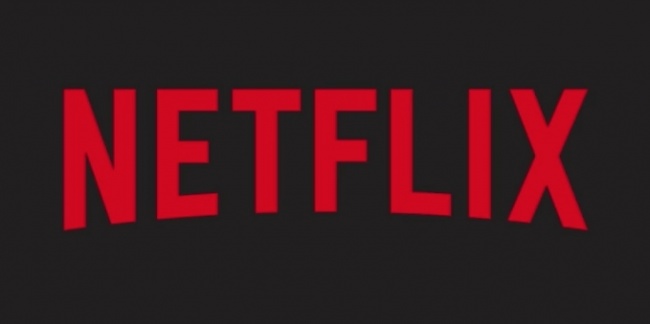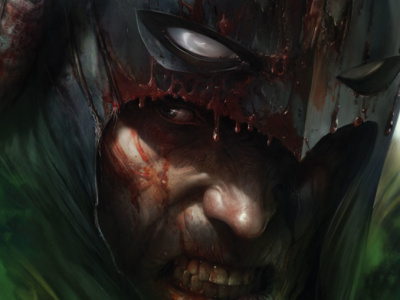This is just the tip of the iceberg in a year when just about every week has featured the same density of comic-related media projects getting greenlit or moved along the production conveyor belt. The big reason this is all happening is because of a looming extinction-level event in the media and entertainment universe: a generational shift in how content is distributed and consumed, with tens of billions of dollars at stake.
The only thing worse than cable. Since the advent of cable television networks in the 1980s and 90s, consumers have always asked why different channels were only available in bundles determined by the cable carrier. Especially once everything went to digital, why couldn’t we simply pick and choose (and pay for) only the channels we wanted rather than paying inflated rates for 200+ channel lineups that included a bunch of sports, home shopping, foreign language and special-interest networks just to get the 5-6 channels we watched 90% of the time?
The answer from the cable carriers boiled down to "because we said so," by which they meant, this arrangement created the most advantageous business situation for advertisers, networks, content developers and the cable companies. Letting consumers pick and choose only the channels they wanted would drain away a lot of the surplus loot and leave powerful stakeholders like professional sports leagues high and dry.
Since they mostly had consumers by the short hairs on this, cable providers dug in to defend their incumbent model built around owning the wires and the set-top box. That left room for insurgents to take advantage of advances in video compression, networking and hardware development to create their own alternatives. Netflix first launched their streaming service in 2007 (just 11 years ago!), and even then, it took another couple of years before consumers decided it was better/faster/cheaper/more convenient than having DVDs shipped to their mailboxes overnight.
For that to happen, Netflix had to find a way to bring its programming straight to your TV without going through equipment controlled by the cable company. So they built their app into the TVs themselves through direct relationships with the manufacturers, and also helped popularize low-cost wireless streaming devices like Roku and AppleTV. Eventually, even Comcast came around, and now includes Netflix (and, reportedly, soon Amazon Prime Video) into their Xfinity system, along with their own cable lineup.
Pretty soon, Hulu and a bunch of other streaming services started up, cord-cutting became a thing, subscription rates started to drop, and the long-predicted cable TV apocalypse is now finally almost upon us. Hooray, right?
Cord cutting and sticker shock. Well… not so fast. It turns out that, while streaming services offer a solid middle ground between the wasteful “500 channels-and-nothing-on” wasteland of the Xfinity programming grid and the highly customized but very expensive pay-per-view option where you buy, say, a season at a time of your favorite shows, there are still some tradeoffs. That’s because the streaming channels aren’t just neutral aggregators of shows from different producers like old TV networks or cable stations are; they are owners and producers of their own content trying to turn their distribution platforms into complete, vertically-oriented transmission towers for their brands, franchises and proprietary ecosystems.
Unlike the old broadcast model that wants your attention in 30- or 60-minute chunks to sell to advertisers, the streamers want your attention and your money in one-month or one-year increments, usually numbers like $8-15 per month. That’s a bigger commitment, even if the monthly costs of each individual service are reasonable, because getting more than a couple of them adds up fast. And once you’ve subscribed to a service, you’ll want to watch as much as you can from that service each month to get more value out of your sunk cost. That logic helps lock consumers in, and lock competitors out.
To do that, they need programs that keep viewers coming back show after show, season after season, using a style of storytelling that delivers a satisfying chunk of story in each individual episode while keeping subplots and intrigue bubbling along under the surface. And since many of the new entrants in the streaming media market are themselves content owners with portfolios of household-name IP like Warner Media, Disney and Paramount, why not exploit properties that already have a fan-base ready to buy whatever new content producers can deliver?
Baiting the trap. This long digression brings us back to the news that kicked off this column, the ceaseless drumbeat of announcements of comic and comic-adjacent genre shows being picked up – or dropped – by different streaming services. It turns out that comics have cracked the storytelling code to make them ideal for scripted TV in the age of binge-watching, and the biggest owners of comic properties are the ones getting ready to fight to the death for market share in 2019.
And death match it will be. Unlike the world of cable, where big sloppy bundles of channels give consumers plenty of choices and generate enough surplus cash to bankroll sports leagues full of millionaire athletes, streaming is a zero-sum competition where winners can build towering vertical monopolies and losers will be stuck in a death-spiral of shrinking audiences leading to slashed program budgets leading to worse program lineups leading to more audience flight.
No one can afford to go into a battle like that half-committed. Anyone who wants to play, from Netflix, Amazon, Apple, Hulu and HBO to Paramount, Disney, and WB/AT&T, plus all their constituent sub-brands and networks of production companies, need to go all in to sign up any content, any creators, and any licenses that might help them win – even if it’s only to keep certain projects and properties out of the hands of competitors.
The Proud Tower. That’s the moment we’re in right now. As I’ve noted previously (see "Who’s Writing the Checks for the Golden Age of Genre Entertainment?"), these companies are loaded to the gills with cash, as a result of a decade of rapacious, barely-regulated business practices, favorable tax policies, a global glut of investable cash with nowhere to go, and a full-blown infrastructure of social media channels, conventions and mainstream business partners stoking fan enthusiasm 24x7x365.
Historian Barbara Tuchman wrote a great book about the leadup to World War I called The Proud Tower, a turn of phrase that evokes this moment when adversaries armed to the teeth are staring at each other across a chasm of competing interests. The old order had cracked from within and was just waiting for a spark to push it over into ruin.
It turns out those years right before the war were a golden age of art and business. Lots of people were spending money for the glory of their civilization – and arming to the teeth – in preparation for the battle they knew was coming. Once the shooting started, it was a different story, and once the shooting ended and victory was declared, a different story yet again.
That’s history’s lesson for today’s media standoff, which today is enabling every conceivable fanboy project to get greenlit, and is keeping prices ridiculously low as different services spin up and try to get scale (99 cent Hulu anyone?). As long as there’s a competition, we all win. As soon as one of them wins, we all lose.
The opinions expressed in this column are solely those of the writer, and do not necessarily reflect the views of the editorial staff of ICv2.com.
Rob Salkowitz (@robsalk) is the author of Comic-Con and the Business of Pop Culture.










